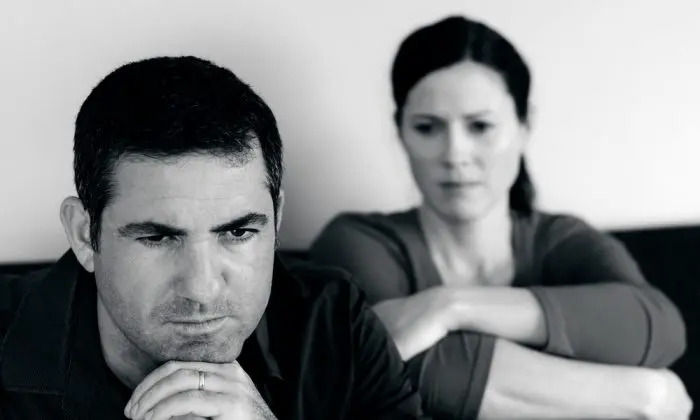Nothing stays the same, including us. We change and grow over our lifetimes—thankfully. And often, our longest and dearest friendships need to change as well, in order to keep up with who we are. However, the process of changing a long-term friendship isn’t usually an easy one, and sometimes, the friendship doesn’t survive. Sometimes the friendship can only be what it was when we were—or were willing to be—someone else.
Liza met Callie when they were college freshmen, and they quickly became best friends. After graduation, they both got jobs in New York and lived as roommates for the majority of their 20s. Eventually, they both married and built families, and they ended up living in different cities. But the friendship remained strong. After 38 years, they had a lifetime of shared history, and Liza had considered Callie to be one of her most important and dearest friends.
But then, something changed. An incident occurred that made Liza aware of an unspoken dynamic in the friendship that she had been participating in for decades. What also became clear was that Liza wasn’t willing to engage in this pattern and to play this role any longer.
The incident was triggered because, in a rare moment, Liza was honest with Callie—about her experience with her. She told her dear friend that something Callie was doing in the relationship was painful for her. She asked Callie if she would consider a different way of doing things.
But what Liza’s honesty instigated in her oldest friend was exactly what Liza now understood had always been underlying and, to some degree, controlling the friendship, or at least her role in it. Callie’s response to hearing Liza’s experience was to go silent: She pulled away from the friendship without explanation. As Liza put it, it was “radio silence, with a distinct aroma of punishment.”
When Liza then requested that they talk about what had happened, she was pummeled with a litany of things she had done to Callie over the years that Callie hadn’t been OK with, but never said anything about. Liza’s inbox was soon filled with long, well-documented lists of her aggressions and issues, evidence for why she was a bad friend, guilty and deserving of Callie’s rage.
In fact, there had been numerous episodes in the friendship when Callie had unexplainably disappeared and stopped responding—once for several years. There had been a number of times when Liza had said something minor or misunderstood something Callie had said, with no ill intent, and had later come to find out that Callie had been enraged about the comment, stewing in it and building a case against Liza in her head.
But in this most recent episode, Liza became acutely aware of the rules of the bond with Callie and the role that she had been playing to keep the friendship intact. Simultaneously, she became aware of her own truth: She had always walked on eggshells and had always had to work hard to get it right with Callie and not misstep. She realized that she had been living in fear for decades of Callie’s anger and of her friend disappearing because of something “bad” that she had done. The unspoken rules were that Liza behaved as Callie wanted her to behave. So, too, Liza knew at a visceral level that she wasn’t allowed to say anything about how Callie’s behavior affected her and how she felt about Callie.
What the two old friends shared was a belief that Liza was guilty, responsible for whatever had ever gone wrong in the friendship. She needed to be what Callie had deemed to be OK, so as to keep the friendship and not reaffirm her own guilt. Ultimately, Liza became aware of the role she had unconsciously agreed to play in the friendship.
But Liza also recognized how her friendship with Callie, which formed when they were just 18 years old and fresh out of their childhood homes, was a carbon copy of the relationship she had with her own mother. Like Callie, her mother had been emotionally erratic and would periodically withdraw her love because of something Liza had said or done.
The narrative on Liza in her relationship with her mother was similarly that she was guilty, a selfish daughter who deprived her mother of the kind of love that she deserved. At the same time, there was an understanding that she was never to bring up her mother’s behavior or call her mother out on how she was affecting Liza. And most certainly, Liza must not discuss what she herself might need from her mother as a daughter. Not surprisingly, the role she played in her longest friendship was precisely as it was in her childhood home, where the nature of love and attachment is born.
In this relationship with her best friend, Liza had been playing the same role as the guilty one—the one who wasn’t allowed to have her own experience. Now aware of it, she knew this dynamic was over. The friendship couldn’t exist as it had existed. She wasn’t willing to walk on eggshells anymore, to behave so as not to be judged. Ultimately, she wasn’t willing to abandon herself to maintain the bond.
We all do this: We form relationships that mirror our early experience and keep us in the same roles that we played with our early caretakers or other important people. Until we become aware of it, we’re acting from underlying assumptions about what an intimate relationship demands and who we have to be to feel loved. As a result, we end up in long-term friendships that are often unsatisfying at the deepest level and keep us stuck in old patterns, not getting what we really need.
Start paying attention to the roles you play in your long-term friendships and who you have to be to maintain them, to keep being loved. Consider if this version of you is an outdated or limited one. Then, with compassion for yourself, consider who you are now, who you want to be in relationships at this point in your life, who you are willing to be, and who you aren’t willing to be.
The truth is, we aren’t who we were when some of our oldest friendships began, and yet we behave as if we still are, often at our own expense. Some friendships can survive our authenticity and evolution and others can’t. But if not, it makes one wonder if they’re worth saving.
It takes courage to unpack the rules of the bond, the unspoken agreements about who we are and who we’re supposed to be in our longest friendships. But ultimately, this process sets us free from our old patterns and allows us to experience new and more real and satisfying friendships. Bringing light to a relationship always includes risk. But in this case, it’s worth it.






